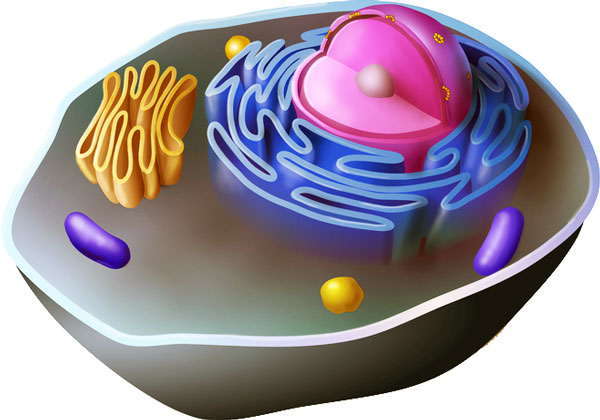 Every living organism on the Earth has its own life cycle from birth to death. Humans, animals, and plants also go through a life cycle. Similarly, cells also go through their life cycle but the methods of their birth and death are different. The life cycle of cells starts when cells divide from their parent cells. Then they grow and survive their lifetime and finally they die.
Every living organism on the Earth has its own life cycle from birth to death. Humans, animals, and plants also go through a life cycle. Similarly, cells also go through their life cycle but the methods of their birth and death are different. The life cycle of cells starts when cells divide from their parent cells. Then they grow and survive their lifetime and finally they die.
The human body is composed of a very large number of cells. For example, our skin cells protect the body and cover the organs and body cavities. All these cells have a certain lifespan .in which they live and are then replaced by new ones.
Generally, a life cycle of a cell include:
- Cell growth
- Cell division
- Formation of cell daughters (new cells)
- Separation from the parent cells
- Finally, the death of cells
Theory of Cell
Furthermore, the theory of cell defines 3 main points about the cell which also shows the importance of cells and their life cycle. The 3 main points are:
- All living things are based on one or more than one cell.
- A cell is a basic block of life that can make single-celled organisms to multicellular organisms.
- New Cells come from old cells by cellular division; also called asexual reproduction.
Mitosis – How New Cells Are Born?
 Mitosis is the basic platform where cells divide and introduce new cells – called daughter cells. In the formation of new cells, the parent cells have to complete several important tasks, such as growing, copying DNA, and becoming ready to divide. Generally, parent cells physically separate into two daughter cells.
Mitosis is the basic platform where cells divide and introduce new cells – called daughter cells. In the formation of new cells, the parent cells have to complete several important tasks, such as growing, copying DNA, and becoming ready to divide. Generally, parent cells physically separate into two daughter cells.
Stages of Mitosis
 Mitosis has 4 main stages which are:
Mitosis has 4 main stages which are:
- Prophase – This is the first step in mitosis which brings many structural changes in the cells such as condensation of chromosomes. The condensation helps chromosomes to easier separate from each other in later stages.
- Metaphase – In this phase, the chromosomes start to align in a plane called the metaphase plate. The cell also makes sure that, the process of alignment is correct before moving to the next stage. In case there is an issue with the alignment, the cell will not be able to move towards the next stage of the division until the issue is solved.
- Anaphase – The chromosomes which were aligned in metaphase start to separate from each other as chromatids and move towards the opposite direction.
- Telophase – In this phase, most parts of the cell are divided into two daughter cells. After this, the daughter cells start to normalize their structure to survive as separate cells.
How Do Cells Survive?
Like every living thing, cells have to get energy for living, growing, and reproducing. For example, plant cells get energy from the sunlight to make their food to survive. And in the human body, cells also get the energy to survive from the food we eat.
Cells must have to take important substances such as oxygen, food, and water from its environment and excrete waste products. If the cell is a single-celled organism, such as bacteria, then it has to get these things from the environment. But, if cells are part of a multicellular organism, such as humans, then they get necessary food and water when that multicellular organism will eat. Without these substances, cells will not survive and in a very short period, they will die.
How Do Cells Die?
Cells can die in many ways, such as heat, poison, lack of oxygen, dehydration, and infection from viruses or attacks from other cells. Overheating, poison, and infection can make the cells to swell-up and burst. Moreover, cells have genetic programing of self-destruction when they reach their maximum age. For example, the maximum lifespan of our red blood cells (RBCs) is 120 days (4 months). However, the RBCs can also die early due to lack of oxygen and infection caused by viruses, such as flu, and bacteria.
Interesting Facts
- In around 4 months, all red blood cells in our body are replaced with new cells.
- The average lifespan of a neuron in the human brain ranges from a few months to 3 years. However, neurons can also live longer than that 3 years in some cases.
- Anaerobic microorganisms that don’t require oxygen for their survival.





